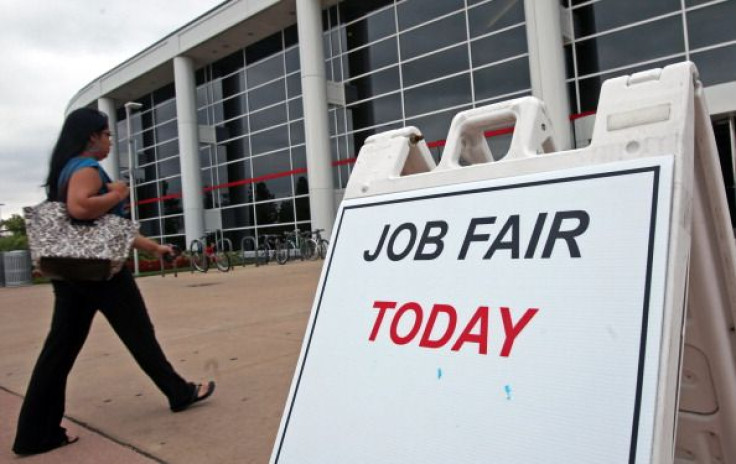Why Did The Unemployment Rate Rise In A Largely Positive March Jobs Report?

An otherwise solid jobs report for March featured one odd quirk: The unemployment rate edged up to 5 percent from 4.9 percent. It’s a slight change but still bound to attract attention, given the broader narrative of falling unemployment for the past five years.
The Bureau of Labor Statistics described the increase as “insignificant,” as it fell below the 0.18 percent necessary to be deemed significant. But economists greeted the uptick as good news. In essence, it means more people want to work.
One of the lingering effects of the Great Recession has been a vast pool of adults who simply gave up on finding work. The government does not include these sidelined workers in its official unemployment rate.
As previously discouraged adults come back to the workforce, not everyone will find a job immediately. That’s why economists look at the difference between job gains and the increase in the overall pool of workers when unemployment temporarily notches up. In March, the increase in the labor force totaled 396,000 individuals, greater than the 215,000 additional positions added to payrolls.
“Admittedly, the unemployment rate did edge up to 5 percent last month, but it increased for all the right reasons,” Paul Ashworth, economist at Capital Economics, wrote to clients Friday, noting the labor force has increased by more than 2 million in the past five months after years of stagnation. “This is a remarkable turnaround in terms of both its speed and magnitude,” Ashworth continued.
For the first time during this recovery, people are entering the labor force more quickly than jobs are being added. It was 2009 when we last saw such a large difference between the increase in payrolls and the number of workers entering the labor force over a six-month average.
There was more good news in the March report: The labor force participation rate increased for the fourth month in a row, a trend that hasn’t occurred since 1992. That persistent rise reverses, if only partially, a decadeslong decline in the share of the adult population taking part in the workforce.
Another factor that might be at work in the slight uptick in the headline unemployment rate last month: quitters. A certain share of those entering the ranks of the unemployed each month consists of those who have voluntarily left their jobs. Since people are more likely to leave when they feel materially secure or likely to find another position, economists greet quitters with open arms.
In March, 10.5 percent of the newly unemployed were job leavers, the highest share since August 2008. Indeed, that proportion was greater than the share of unemployed people who had entered from outside the labor force, a phenomenon that has happened only twice during the recovery.
It might seem contradictory that the share of the unemployed who were newly entered into the labor force — “new entrants” shown in the black line above — actually declined in March, given the surge of previously sidelined workers coming into the labor force. Wouldn’t the growing labor force swell the proportion of unemployed people who are deemed new entrants?
The Bureau of Labor Statistics explained that although there was a decline in the overall number of workers moving from outside the labor force to the unemployed population, there was a similar decline in the number of unemployed workers giving up and leaving the labor force. With more people staying unemployed rather than giving up altogether, unemployment ticked up.
This is all good news for the American worker. But the long shadow of the Great Recession still looms. Wage growth, for instance, has yet to rise to levels commensurate with a strong economy, and an outsize share of employees are working part-time when they’d like to be full-time. But as more Americans return to the workforce, hopes for improvements in wages and hours increase.
© Copyright IBTimes 2024. All rights reserved.












